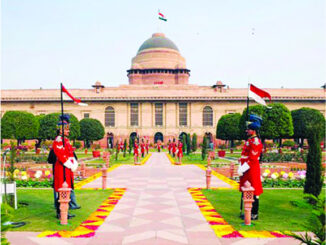
Unfortunately, in this fight between the state and the Naxals, the local tribal’s welfare is neglected. They are becoming collateral damage to this protracted insurgency which is showing no signs of depleting. Unless the government looks at this problem from a fresh perspective of toughening its stance on the Naxals while reaching out to the tribals on their terms, there will be no change in the situation. In fact, the insurgency may spread to newer theatres and in days to come, we may see more such attacks”, says the author. .
The attack on a Congress convoy in Chhattisgarh has reiterated two things: the power of the Naxals and the failure of security agencies. Does this attack stand to destroy what the development schemes stood for and were seemingly achieving in Chhattisgarh state? Where is the state failing in its anti-Naxal strategy? Is it time for the state to toughen its stance or is there still room for dialogue? The state’s efforts in combating Naxalism have been lauded by experts and the Planning Commission for being right on track.
Since 2010, when a contingent of 76 CRPF troops were ambushed and killed in Tadmetla in present Sukma district, there hasn’t been a significant incident involving the Naxals. Their Public Distribution System is one of the best in the country and the state’s efforts in promoting primary education have gained considerable attention. However, the recent incident in which 28 people, including the state Congress chief, Nand Kumar Patel and the mastermind behind the controversial Salwa Judum movement, Mahendra Karma, is evidence of serious security lapses.
This incident has pushed Chhattisgarh back a few years in terms of its progress in countering LWE. The mere fact that 200-250 armed cadres were mobilised without the local police stations or Central Paramilitary Forces getting even the slightest hint of it is proof enough that the ground level intelligence has failed miserably. For the movement of a high profile contingent of this nature, there are standard operating procedures (SOP) in place.
Such was the complete breakdown of communication that in the isolated forested areas of Darbha, after a mine explosion, the extremists took their time to attack the convoy and still had time to celebrate before the police could react. They were not only armed with superior weapons, but were also one step ahead of the security agencies in intercepting. One question that lingers is could they have carried out an attack of this nature without some inside information. Perhaps in the ensuing investigation this would be clarified.
In terms of the state’s implementation of welfare schemes and development initiatives to counter this menace, Chhattisgarh’s record has been comparatively better. However, being largely a tribal state, the authorities need to understand that the parameters of development that are followed at the Centre are not applicable to the rural and tribal parts of the country. In Chhattisgarh, especially, building a road may not get the desired impact that perhaps, strengthening the healthcare system may.
Also, tribal villages in the state are substantially different from traditional rural set-ups. A village may stretch on for hundreds of kilometres with houses 2-3 kilometres apart, a factor that the government needs to consider while implementing schemes like setting up a dispensary or putting up a hand-pump. The state is failing in its anti-Naxal strategy in terms of garnering local ground level support. The local villagers, some out of fear and some by choice join the insurgency partly and provide ground level support to the Naxals.
They may not be considered active cadres, but when the Naxals need foot soldiers, they approach these villagers to carry out their activities. The Chhattisgarh government, since 2011, when Salwa Judum was rendered unconstitutional by the Supreme Court on the grounds of human rights violation, has been attempting to revive it by re-appealing against the decision. Their justification is that Salwa Judum cadres were providing the security forces ground level intelligence and acting as force multipliers.
Arming them in 2008, the state says, was in order to ensure they are not attacked by the Naxals. The Naxals have been attacking all the former Salwa Judum cadres and the state, in order to protect them, put them in heavily fortified camps. Mahendra Karma was one of the most vocal supporters of reinstating Salwa Judum. With his death, the state’s efforts to bring back Salwa Judum have suffered a serious setback.
Instead of supporting reinstating Salwa Judum, the Centre in January 2013 sanctioned Rs 280 crore to set up a special elite force on the lines of the hugely successful Greyhounds in Andhra Pradesh to carry out targeted strikes in four LWE-affected states of Bihar, Jharkhand, Odisha and Chhattisgarh. This force is supposed to start operations within six months.
This is a clear indication of the Centre toughening up its stance in combating LWE in the Red Corridor. Moreover, in an interview to CNN IBN this week, the Minister for Rural Development, Jairam Ramesh said, “You can’t have a dialogue with people who don’t want to have a dialogue. Maoists are not here for tribal welfare.” He has been accused in the past of taking a soft approach but after such an attack, the question remains, is there still room for dialogue? Unfortunately, in this fight between the state and the Naxals, the local tribal’s welfare is neglected.
They are becoming collateral damage to this protracted insurgency which is showing no signs of depleting. Unless the government looks at this problem from a fresh perspective of toughening its stance on the Naxals while reaching out to the tribals on their terms, there will be no change in the situation. In fact, the insurgency may spread to newer theatres and in days to come, we may see more such attacks.




Be the first to comment